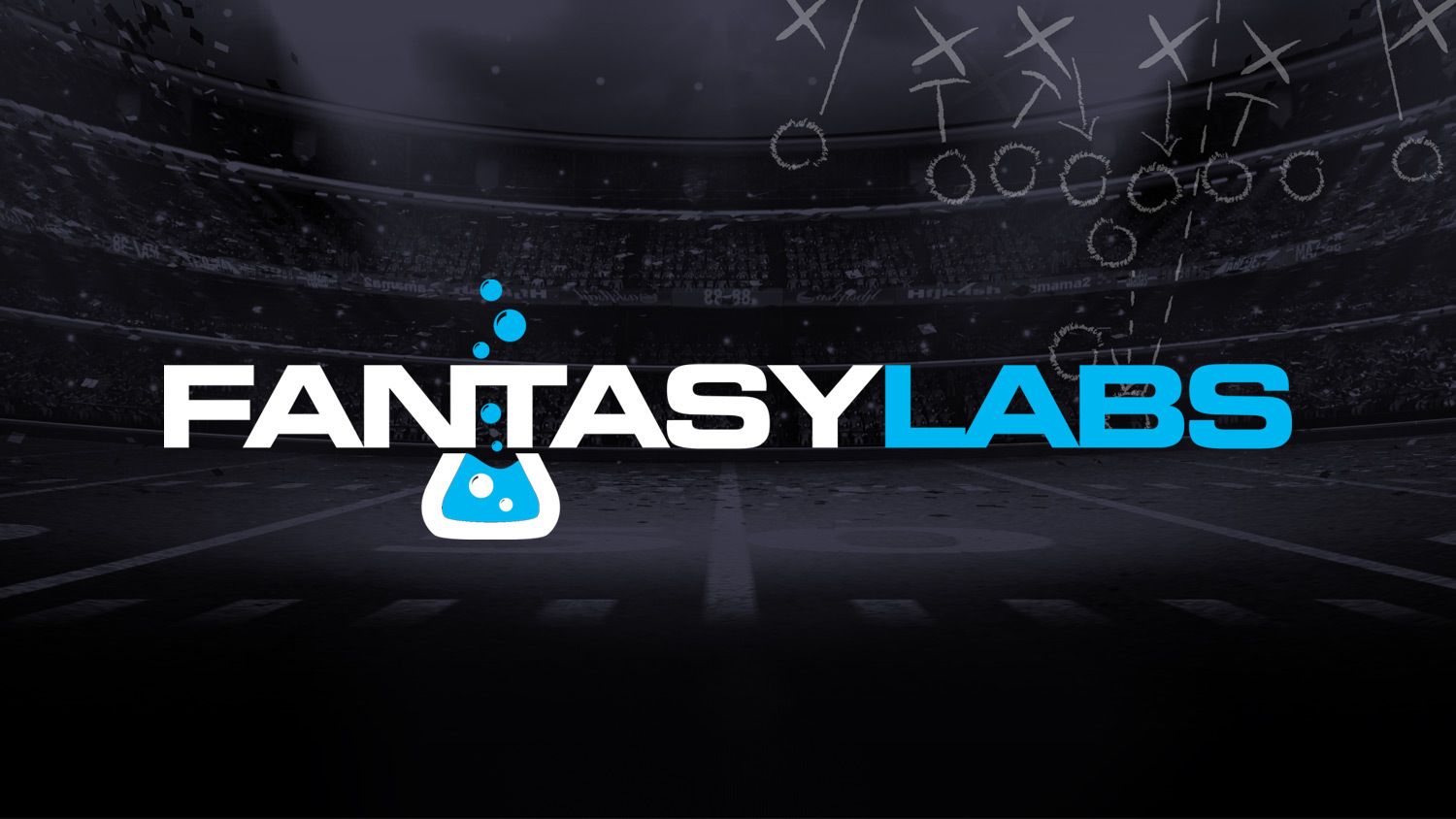As DFS players, we spend most of our time looking forward to the next slate, the next season, etc. Equally important, though, is looking back. Figuring out the thought process that leads to winning lineups is crucial. That’s what makes us better players long term.
Each week in 2022, I’ll look at the winning lineup in DraftKings Millionaire Maker Contest with an eye for how the lucky winner arrived at the lineup that took it down. We’ll focus on the key lessons of the winning lineup — and maybe even some mistakes to avoid.
While a high degree of positive variance is necessary to win a contest of this size (the standard $20 contests have over 236,000 entrants, there’s still a large amount of skill involved to get to a position to benefit from that variance.
Here’s Week 10’s winner:

The Lineup
funkymonk1369 is this week’s winner, taking down the contest with a portfolio of five lineups. They built around five different quarterbacks in those five lineups, appropriately stacking (or not) based on the type of quarterback involved.
We’ll touch on their overall exposure to the players in this lineup using the FantasyLabs Contest Dashboard Tool.
The Stack(s)
The first notable thing about funkymonk’s lineup was the lack of a traditional quarterback k+ pass-catcher stack. This obviously makes a ton of sense with a quarterback like Justin Fields — the bulk of his production comes through his legs. Still, many DFS players feel the need to force stacks, regardless of the quarterback they roster.
Of course, this week, a Fields stack also could’ve worked — both of his passing touchdowns came to Cole Kmet, who at $3,400 outscored the tight end funkymonk used, Travis Kelce, at $7,800. The bigger takeaway is that you certainly don’t need to stack running quarterbacks though, and funkymonk also played Josh Allen “naked” in another lineup.
This isn’t to say this lineup was devoid of stacks, though. Opposite Fields, they played Amon-Ra St. Brown of the Lions. While Fields had a good shot at a big game independent of St. Brown, the wide receiver’s production heavily correlates with a big Bears’ score. Detroit is more likely to throw the ball when chasing points and St. Brown was essentially their only viable target.
The aforementioned Kelce stood out on this slate, with projections nearly double the next best option. The Chiefs also probably needed the Jaguars to put up some points for a true ceiling game, making Christian Kirk a logical bring-back. He has had a firm grip on the No. 1 receiving role in Jacksonville.
Finally, Tony Pollard projected as a great play with Ezekiel Elliott set to miss time — but with heavy ownership. One way to effectively lower that ownership is by pairing him with a bring-back from Green Bay. This lineup went with Christian Watson, expertly utilizing the opposing RB/WR correlation we’ve touched on in the past.
They used the Watson-Pollard combo in three of their five lineups.
The Chalk
Most of the true chalk in this lineup was part of various stacks — and deftly handled to reduce effective ownership. The one exception being Minnesota on defense. This was an interesting call. The Vikings were on track to be ultra-chalky for much of the week — until Josh Allen suited up to play.
Funkymonk stuck with the Vikings, although we don’t know if that was a conscious decision or a lack of reaction to the Allen news. Results non-withstanding, Minnesota was about as bad of a D/ST play as one could make this slate. Ownership on the Vikings came up based on Allen being out, so with him active, it became the worst of it from both an ownership and projection standpoint.
With that said, it worked out. Minnesota scored a late defensive touchdown on a botched snap by Allen, funkymonk won a million dollars, and I’m writing about it. Maybe not such a bad play after all — though I’d caution against trying to replicate it.
The Sleepers
Amazingly, Watson is the only player under 10% ownership in this lineup. That turned out to be a crucial play, both for the Pollard correlation and the low-owned production. While we don’t know for sure, it’s a safe bet that some of the combinations used by funkymonk were collectively well below 10%, though. Even Justin Fields, without a bring-back, was likely half (or less) of his total ownership.
It’s just as valuable to have combinations that combine for low ownership as it is for individual plays. For example, imagine two players with 50% ownership, but only 1% of lineups use them both… If they both post “have to have it” scores, you’ve moved past 99% of the field with your “chalk plays.”
That’s my favorite thing about this lineup. Sometimes players are chalk for a reason, and that reason is that they’re the best plays. However, you can still play them in massive tournaments — as long as you find a unique angle.









